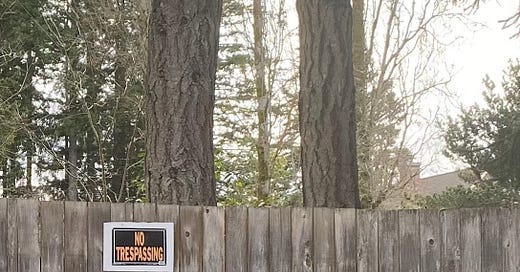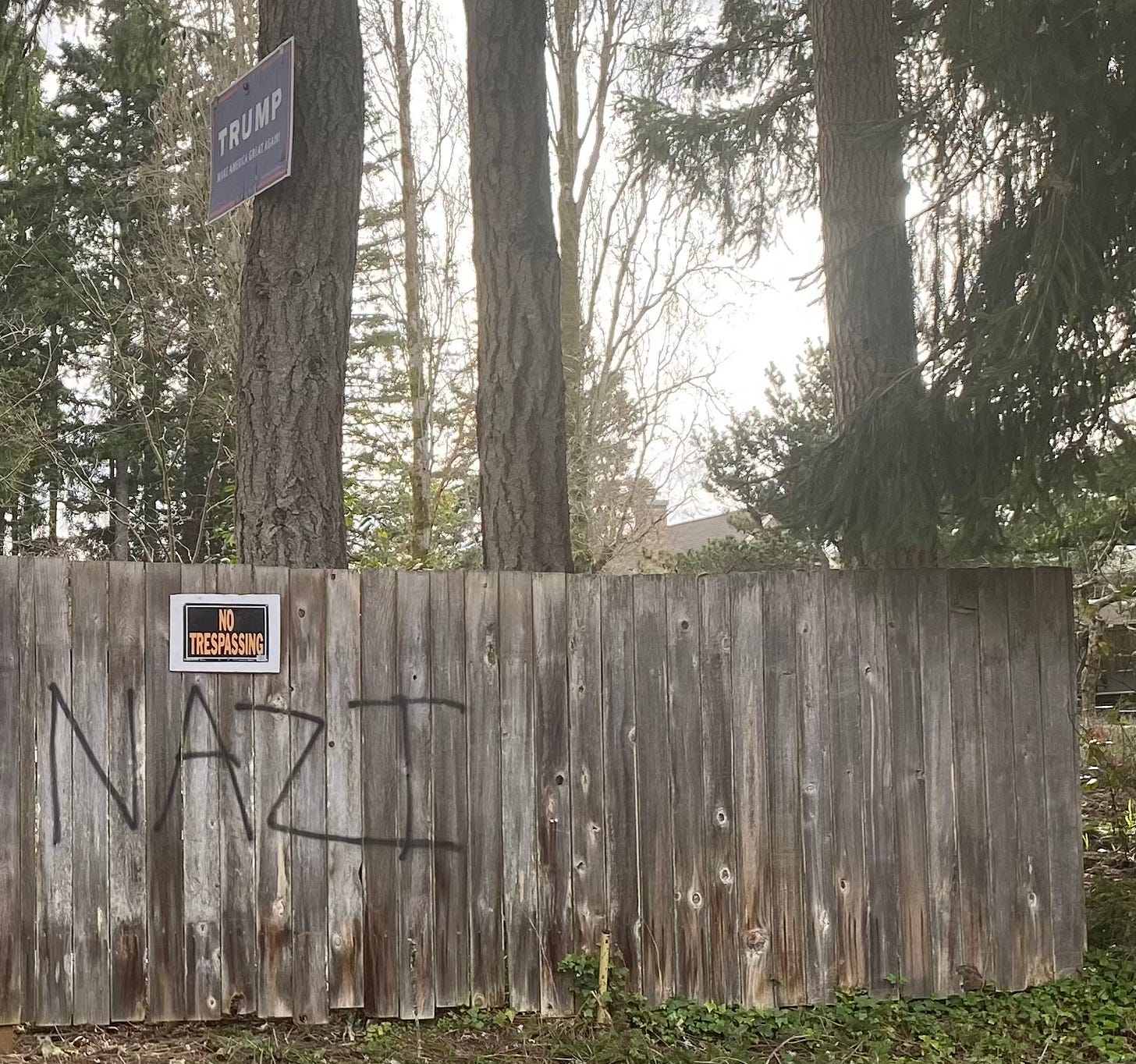This is my neighborhood on Bainbridge Island, a 35-minute ferry ride from Seattle. There has been a collection of Trump signs in this yard non-stop for nearly a decade, since well before the 2016 election. One especially large sign, which has disappeared in recent weeks, was festooned with holiday lights year-round. Because they never came down, these signs felt less like political expression and more like a provocation. The whole scene just felt un-neighborly.
Bainbridge sits on a fault zone and during earthquake preparedness drills, we’re always told that our neck of the woods—the south end—would likely be cut off from the rest of the island in the event of The Big One. We’d need to depend on, and help, one another. And so, it’s with a pit in my stomach that I’ve watched this happen: the “Nazi” tags started a few weeks ago, a new one appearing as soon as the first was sanded off.
I don’t know who tagged the fence. I also don’t know the neighbor behind the Trump signs. What I do know is that nothing good comes from an escalation like this. When friends in the neighborhood share where their sympathies lie, I keep returning to the same strange thought: I wish I could get everyone involved into a formal mediation.
Years ago, I became a Certified Mediator. It was volunteer work, and it was difficult—hammering out parenting plans, workplace disputes, and settlements from Small Claims Court. Sometimes the parties were so heated they had to be kept in separate rooms, with the mediators shuttling back and forth. Eventually, the work became too time-consuming on top of everything else I was doing; I had to give it up.
But now, as I seek a point of entry for my pivot from the private sector to public service, I've decided: this is it. I’m returning to mediation. It’ll take some time before I’m back to practicing—I have to get re-certified as a start—and it won’t stop me from exploring elected office, but it feels like a good next step. It will take me deep into my community; the DRC (Dispute Resolution Center) I’ll be affiliated with serves our entire county. The work will undoubtedly reveal anew the many stressors that divide us. But I expect I’ll also be reminded—as I was the first time around—that common ground can almost always be found. Making peace, like any art worth doing, is just wicked hard.
Thanks for reading,
Kate
Next time: does my choosing a collaborative path like mediation undercut my call to Congress and Big Business to stand up to Trump? Spoiler: no! There’s a difference between working to bridge divides in our communities—and holding powerful players to account.





I love this. You are brilliant, and wonderful at diffusing situations. We are in desperate need of moderate policies—and moderators, it would seem. Democratic process that acknowledges discourse and separate viewpoints. Wishing you the best, Kate!
This is such a good direction to head toward. More power (in effective mediation) to you! For years, I’ve been baffled by why more people don’t step into the space, preferring to be players holding their positions rather than Bridgers, those who prioritize bringing parties together to resolve major differences. Maybe it’s just the middle-child in me, but it’s so satisfying to contribute to forming collaboration.